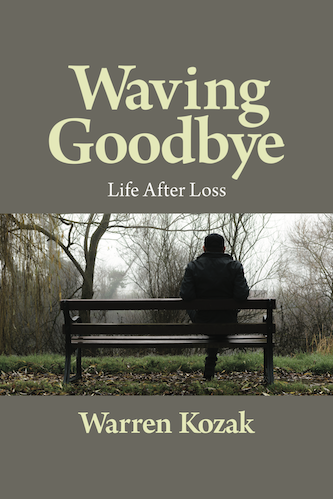You Can Limit Death’s Financial Costs, if Not the Emotional Ones
The transfer of assets when a spouse dies can be fairly simple—if you learn from my mistakes.

I pride myself on keeping meticulous financial records. But since my wife died on Jan. 1, I discovered I had made some real rookie mistakes that led to hours of extra work and substantial fees. The transfer of assets between spouses can be fairly simple—if you learn from my mistakes.
Dr. Lisa Jane Krenzel and I shared everything throughout our marriage. Like many couples, we split responsibilities. I paid the bills and made investments. She took care of our health insurance, plus the house. We maintained individual checking and savings accounts, as well as separate retirement accounts from various jobs throughout our careers. What went wrong?
• Issue One: When we opened those checking and savings accounts, we never named beneficiaries. I had assumed, incorrectly, that our accounts would simply transfer to the other in case of death. The banker who opened the accounts never suggested otherwise. With a named beneficiary, her accounts would have simply been folded into mine. Instead, I had to hire a lawyer—at $465 an hour—to petition the court to name me as the executor of her estate. I needed this power to transfer her accounts. Filing costs in New York City for the necessary document was $1,286. The running bill for the lawyer stands at $7,402.00, and I expect it to rise.
I also needed the documents for the companies that managed her retirement accounts and a mutual fund, because, as at the bank, we never named a beneficiary. By the way, this paperwork also required signature guarantees or a notary seal, which can take up an afternoon.
• Issue Two: The highly charged question of funeral and burial. Last summer, when I was told Lisa would not survive this illness, I tried to raise the issue of burial with her. She refused to have the conversation, but I quietly went ahead and purchased a plot of graves in the cemetery in Wisconsin where my parents, grandparents and great-grandparents are buried. This was something I actually did right.
We had to employ two funeral homes—one in New York and one in Wisconsin—and her body had to make the journey out there. All told, I spent $46,359 to cover funeral expenses, graves, transportation, a headstone and a basic casket.
I noticed something interesting in this process. All of my fellow baby boomer friends I have since asked have so far refused to deal with the issue. They wince when I even raise the question. Hear me: You don’t want to have to make this decision at the time someone close to you dies. You simply are not thinking straight.
• Issue Three: Our health insurance plan covered the long hospital stays and doctors’ visits. However, shortly after Lisa died, I still received bills, even though our deductibles and copays had long since been covered. I paid them immediately, which was a mistake. I was incorrectly billed and I have been fighting the hospitals and insurance company since January to get a refund, even though everyone agrees the bills were incorrect. Before you pay any medical bills, make a simple call and determine their legitimacy. Mistakes are constant: The systems are so complicated, even people in these offices don’t always understand the intricacies.
• Issue Four: Lisa had two life-insurance policies—one through her work and the other we purchased privately. The former was handled quickly and efficiently by her job and a check arrived almost immediately. Although the insurance company sent me a check for her private policy soon after her death, it took three months of constant calls and emails to determine a refund of the premium I had already paid for three months past her death. I kept getting wrong information from the company, because the people I dealt with didn’t understand it themselves.
• Issue Five: Over the course of Lisa’s working life—from her first job at a fast-food restaurant to medicine—she paid more than $100,000 to Social Security. Since she died at 60, and our 19-year-old daughter is one year past the age of receiving a monthly benefit, all this money has simply disappeared into the lockbox in Washington. Nothing you can do about this one.
Finally, there is the major psychological trauma of grief. I think most people believe death will never intrude on their lives and when it does, we will be so old and decrepit that it won’t much matter. Trust me on this—even when it’s been expected for a while, it still shocks deeply. There is absolutely no way you can prepare yourself for the shattering heartbreak of loss. When it did come to me, I found the support of friends, family and faith to be invaluable. Amazingly, that cost nothing.
Waving Goodbye: Life After Loss
For anyone struggling with the loss of a spouse—anyone whose world has been turned upside down in a way they’ve never encountered before—here is something that could help. Waving Goodbye is a candid, honest, and approachable guide to dealing with the death of a spouse written by a very ordinary guy who has lived through the ordeal.
Warren Kozak doesn’t just tell you that time heals all wounds; he explains how the passage of time actually helped. Despite the shattering heartbreak and insurmountable grief, Kozak shares what worked, what didn’t, and the insights he learned along the way to help anyone who has suffered this kind of loss. > READ MORE





